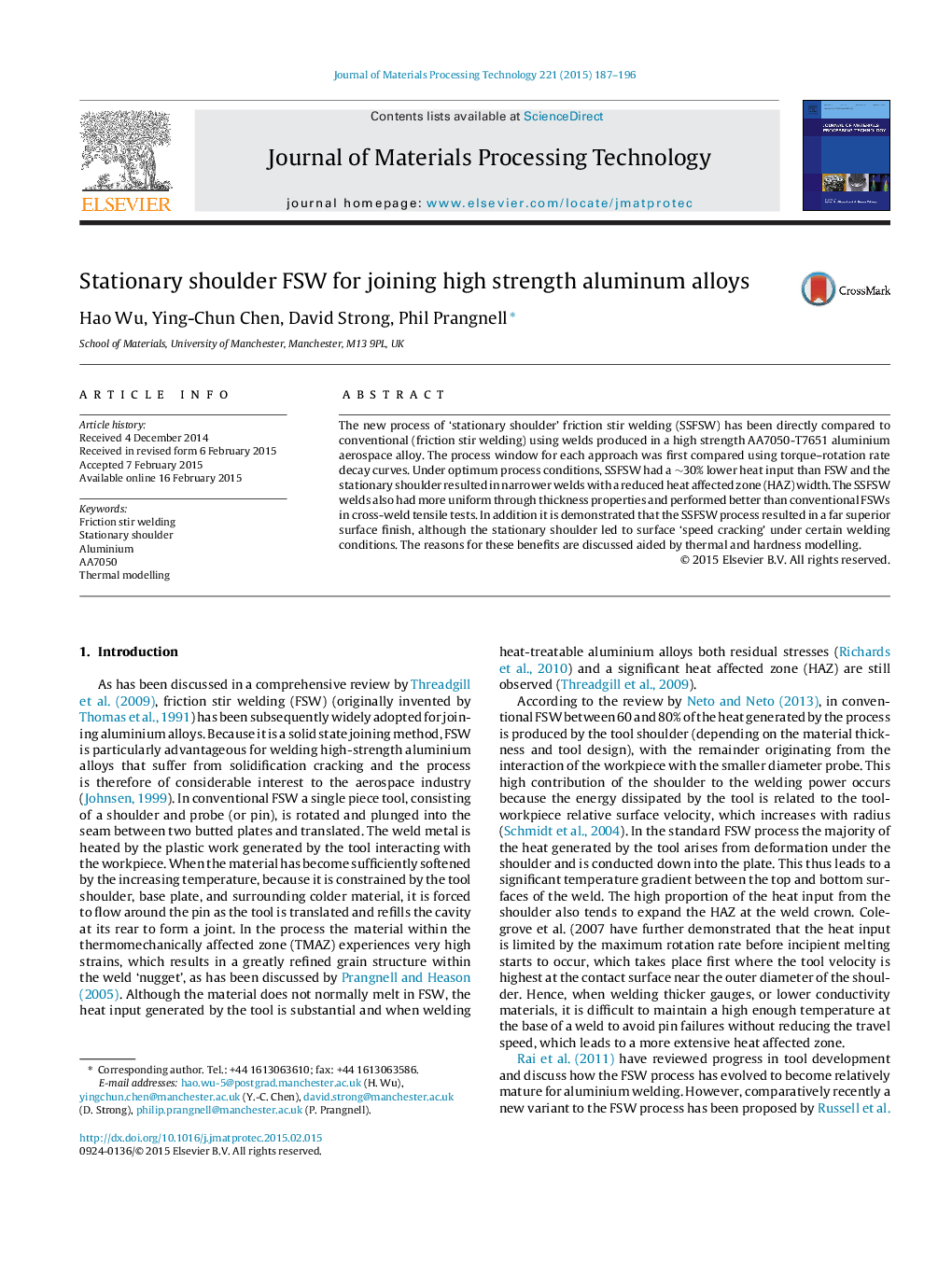| Article ID | Journal | Published Year | Pages | File Type |
|---|---|---|---|---|
| 7177127 | Journal of Materials Processing Technology | 2015 | 10 Pages |
Abstract
The new process of 'stationary shoulder' friction stir welding (SSFSW) has been directly compared to conventional (friction stir welding) using welds produced in a high strength AA7050-T7651 aluminium aerospace alloy. The process window for each approach was first compared using torque-rotation rate decay curves. Under optimum process conditions, SSFSW had a â¼30% lower heat input than FSW and the stationary shoulder resulted in narrower welds with a reduced heat affected zone (HAZ) width. The SSFSW welds also had more uniform through thickness properties and performed better than conventional FSWs in cross-weld tensile tests. In addition it is demonstrated that the SSFSW process resulted in a far superior surface finish, although the stationary shoulder led to surface 'speed cracking' under certain welding conditions. The reasons for these benefits are discussed aided by thermal and hardness modelling.
Related Topics
Physical Sciences and Engineering
Engineering
Industrial and Manufacturing Engineering
Authors
Hao Wu, Ying-Chun Chen, David Strong, Phil Prangnell,
